Английский язык
| Код | 357227 | ||
| Дата создания | 2013 | ||
| Страниц | 5 ( 14 шрифт, полуторный интервал ) | ||
|
Файлы
|
|||
|
Без ожидания: файлы доступны для скачивания сразу после оплаты.
Ручная проверка: файлы открываются и полностью соответствуют описанию.
|
|||
Образцы страниц развернуть (5)
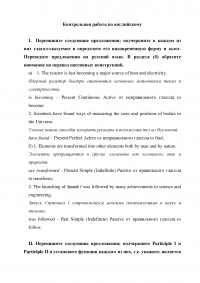
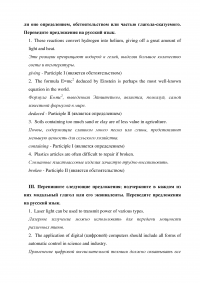
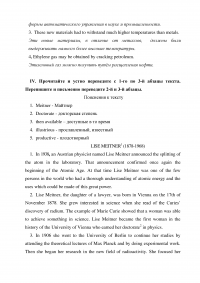
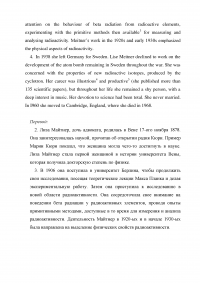
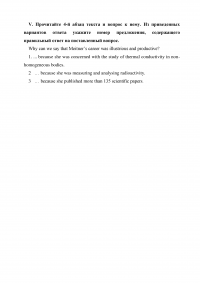
Содержание
I. Перепишите следующие предложения; подчеркните в каждом из них глагол-сказуемое и определите его видовременную форму и залог. Переведите предложения на русский язык. В разделе (б) обратите внимание на перевод пассивных конструкций.
а)
1. The reactor is fast becoming a major source of heat and electricity.
...
2. Scientists have found ways of measuring the sizes and positions of bodies in the Universe.
...
б)
1. Elements are transformed into other elements both by man and by nature.
...
2. The launching of Sputnik 1 was followed by many achievements in science and engineering.
...
II. Перепишите следующие предложения; подчеркните Participle I и Participle II и установите функции каждого из них, т.е. укажите, является ли оно определением, обстоятельством или частью глагола-сказуемого. Переведите предложения на русский язык.
1. These reactions convert hydrogen into helium, giving off a great amount of light and heat.
...
2. The formula E=mc2 deduced by Einstein is perhaps the most well-known equation in the world.
...
3. Soils containing too much sand or clay are of less value in agriculture.
...
4. Plastics articles are often difficult to repair if broken.
...
III. Перепишите следующие предложения; подчеркните в каждом из них модальный глагол или его эквиваленты. Переведите предложения на русский язык.
1. Laser light can be used to transmit power of various types.
...
2. The application of digital (цифровой) computers should include all forms of automatic control in science and industry.
...
3. These new materials had to withstand much higher temperatures than metals.
...
4. Ethylene gas may be obtained by cracking petroleum.
...
IV. Прочитайте и устно переведите с 1-го по 3-й абзацы текста. Перепишите и письменно переведите 2-й и 3-й абзацы.
Пояснения к тексту
LISE MEITNER1 (1878-1968)
1. In 1938, an Austrian physicist named Lise Meitner announced the splitting of the atom in the laboratory. That announcement confirmed once again the beginning of the Atomic Age. At that time Lise Meitner was one of the few persons in the world who had a thorough understanding of atomic energy and the uses which could be made of this great power.
2. Lise Meitner, the daughter of a lawyer, was born in Vienna on the 17th of November 1878. She grew interested in science when she read of the Curies’ discovery of radium. The example of Marie Curie showed that a woman was able to achieve something in science. Lise Meitner became the first woman in the history of the University of Vienna who earned her doctorate2 in physics.
3. In 1906 she went to the University of Berlin to continue her studies by attending the theoretical lectures of Max Planck and by doing experimental work. Then she began her research in the new field of radioactivity. She focused her attention on the behaviour of beta radiation from radioactive elements, experimenting with the primitive methods then available3 for measuring and analysing radioactivity. Meitner’s work in the 1920s and early 1930s emphasized the physical aspects of radioactivity.
4. In 1938 she left Germany for Sweden. Lise Meitner declined to work on the development of the atom bomb remaining in Sweden throughout the war. She was concerned with the properties of new radioactive isotopes, produced by the cyclotron. Her career was illustrious4 and productive5 (she published more than 135 scientific papers), but throughout her life she remained a shy person, with a deep interest in music. Her devotion to science had been total. She never married. In I960 she moved to Cambridge, England, where she died in 1968.
Перевод:
...
V. Прочитайте 4-й абзац текста и вопрос к нему. Из приведенных вариантов ответа укажите номер предложения, содержащего правильный ответ на поставленный вопрос.
Why can we say that Meitner’s career was illustrious and productive?1. ... because she was concerned with the study of thermal conductivity in non-homogeneous bodies.
2. ... because she was measuring and analysing radioactivity.
3. ... because she published more than 135 scientific papers.